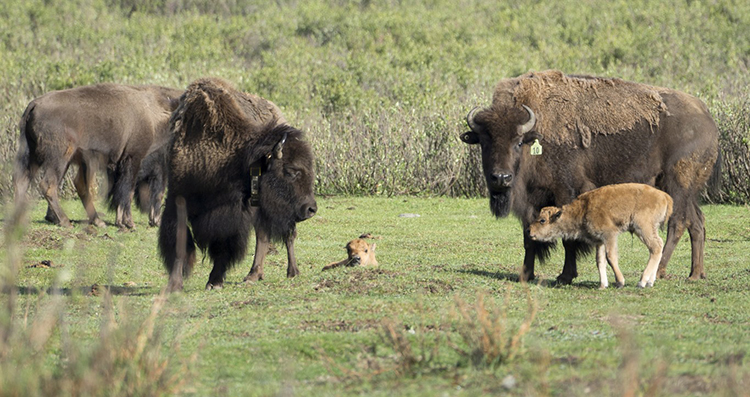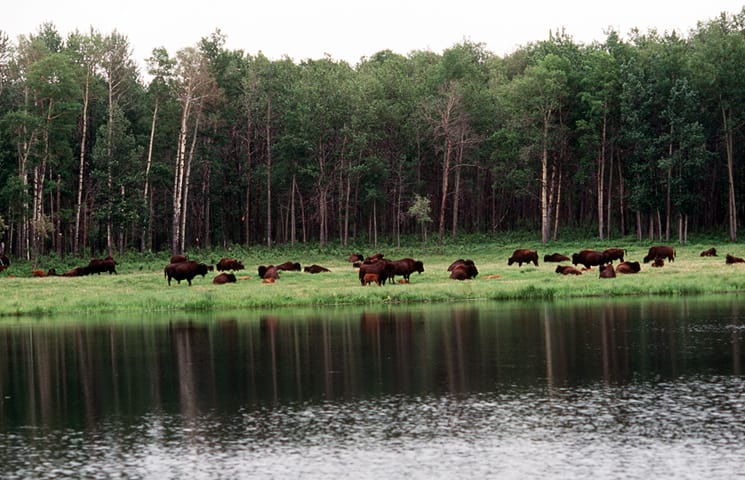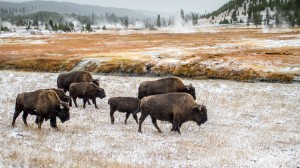Bison Made in Banff
Tuesday, September 4th, 2018September 4, 2018
In July 2018, a herd of bison that had relocated to Canada’s Banff National Park in 2017 produced its first “made in Banff” calves (as Parks Canada is touting) in some 140 years. The bison babies were the first to be conceived and born in the area since the 1870′s. Two bison calves appeared on July 15, 2018, and a third followed on July 19. Six new calves arrived in August. North American bison are commonly called American buffalo.

“Little red” bison calves stay close to their mothers at Canada’s Banff National Park in July 2018. Credit: © Parks Canada
Banff National Park, Canada’s oldest, lies on the eastern side of the Rocky Mountains in southwestern Alberta. Known for its spectacular scenery, the park also boasts an impressive animal population that includes bighorn sheep, black bears and grizzlies, deer, elk, moose, mountain goats, and—since last year—a small herd of bison.
In February 2017, 16 bison, including 10 pregnant females, were moved to Banff’s Panther Valley from Elk Island National Park near Edmonton. Panther Valley is a remote wilderness area with wide, grassy pastures. The bison have thrived there, and the females produced 10 “made in Elk Island” babies last summer. (All the calves survived the year and are now nearly full grown.) The females then again became pregnant—in Banff, this time. The original herd of 16 expanded to 35, including nine “little red” bundles of joy. Bison calves are born with bright reddish fur; they later take on the chocolate brown color of their parents.

Bison graze in Elk Island National Park in Alberta, Canada. A bison herd from Elk Island was brought to Banff National Park in February 2017. Little red calves can be seen among the adults. Credit: © Parks Canada
Great herds of bison once roamed over North America between the Appalachian Mountains on the east and the Rockies on the west. Native Americans depended upon bison flesh for food and bison hides for clothing. In 1850, about 20 million bison still thundered over the western plains. Huge herds often forced railroad trains to stop while the animals crossed the tracks. In the late 1800′s, white hunters slaughtered millions of bison. This killing deprived the Native Americans of their main source of food and almost wiped out the bison.
By 1889, fewer than 1,000 bison could be found alive in the United States. Then efforts started to prevent the species from becoming extinct. Game laws and other protective measures allowed the surviving American bison to live and multiply. As a result, about 10,000 bison now live in national, state, and local preserves in the United States. About 3,000 bison roam on public lands in Canada. In addition, there are more than 300,000 bison on private ranches throughout the United States and Canada.



